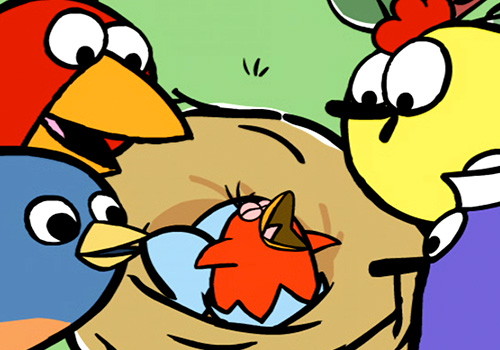Procedure
We know that captions are beneficial for people who are deaf and hard of hearing and that audio descriptions are beneficial for people who are blind or have low vision.
For years, there has been anecdotal evidence of captions and descriptions being used a much broader group including students with different learning styles and people learning English.
In other words, is it possible that accommodations intended for specific audiences with specific disabilities can actually benefit a much wider audience?
In order to study this question, NCAM and its research partner, MAD*POW, developed a research methodology for testing the effect of captions on the viewing engagement of early learners with and without learning disabilities but have normal hearing. With some modification, this research methodology can be used to study audio description as well.
What follows is both an overview of the work conducted, as well as the full report. If you are interested in reading the full report you can either select the full report icon or navigate to specific sections using the below table.
Methods of Testing
We recruited two typically-developing children and two children with ADHD, none of whom have a hearing impairment.
- Each participant watched a 9-minute video with captions, a different 9-minute video without captions, and played the same game with and without captions for 3 minutes.
- During each activity, we recorded affective signs of engagement and disengagement, response times to auditory probes, and gaze patterns and fixations using eye-tracking equipment.
- After each activity, we asked the participants questions to assess their self-reported enjoyment and comprehension.
| Method | Implilcations |
|---|---|
| Eye-tracking | More time spent looking at the screen and/or captions suggests greater visual attention and higher behavioral engagement |
| Secondary task technique | Longer average response times suggests higher cognitive engagement |
| Observation of affective signs | More signs of engagement than disengagement suggests higher affective engagement |
| Self-reporting | Positive responses to engagement and endurabillity suggest higher affective engagement |
| Comprehension Assessment | Correct responses to comprehension questions sugests increased learning |
Overview
 This eight-page overview provides some background for the project and gives a short summary of the methodology and results. Select the button below to read it.
This eight-page overview provides some background for the project and gives a short summary of the methodology and results. Select the button below to read it.
Full Report
 This 67-page report gives an in-depth look at the methods used, results and the implication of those results. Select the button below to read it, or the table above to go to a specific section.
This 67-page report gives an in-depth look at the methods used, results and the implication of those results. Select the button below to read it, or the table above to go to a specific section.
We want to hear from you!
Accessible Peep’s videos and games are universally designed with their accommodations available to everyone. Please use them with students of all abilities and learning styles and use the how-to guides to create your own accessible learning materials. Please let us know how it goes by sending us an email.



